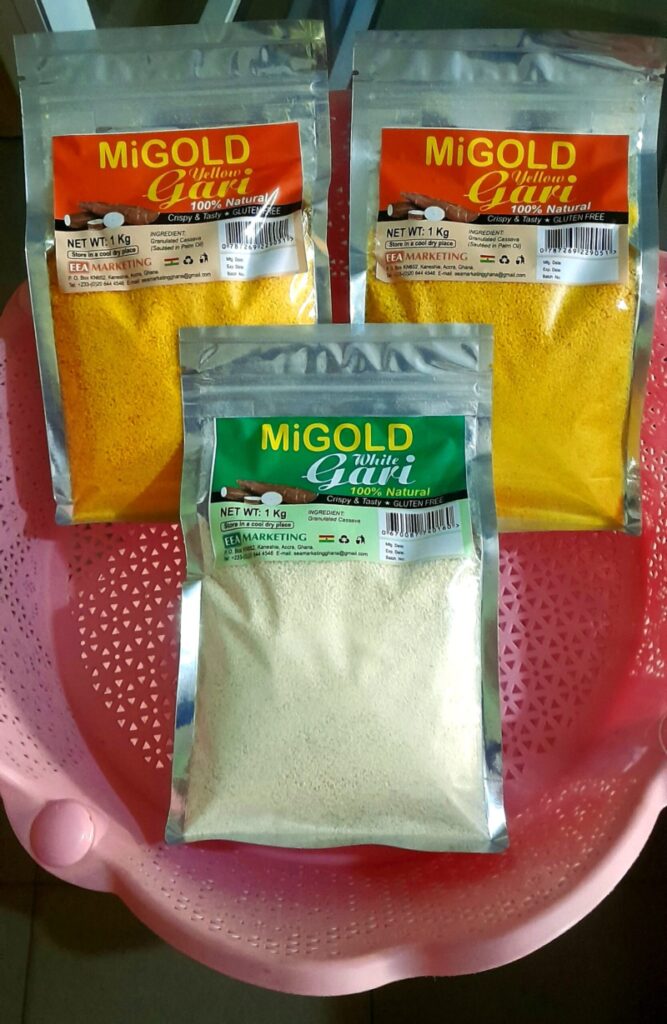Gari carbohydrate food is a by-product of cassava root and is very popular in West Africa. The Hausa word for flour is gari. Equally comparable to grits or semolina couscous. It comes in two main colors: white and yellow. Palm oil goes into the frying of the yellow. In addition, gari has a unique flavor and taste as a result of the fermentation process and frying method.
Gari The Carbohydrate Food Nutrition
Each normal serving cup of gari typically contains less than 1% fat, 0% cholesterol, 34% carbohydrates, 29% dietary fiber, about 4% protein, and 6% iron. Besides, there are health advantages when you eat gari. Furthermore, it helps with digestion because of its high fiber content. Also, it increases immunological function. Advance eye health. Energizes. Cancer avoidance. Equally important, Gari prevents old-age ailments. What’s more, it’s gluten-free. Read the blog post about Gari’s health advantages: https://eea-marketing.com/blog/health-benefits-of-gari-2/
Gari Processing
Gari Dishes
A gari meal, or eba dish, is made by combining gari with hot water and kneading the mixture with a wooden spoon. You can also use it to prepare meals from a range of cuisines. Furthermore, with dishes like okra soup, egusi soup, stew, etc. It compliments fried ripe plantains and bean stew. And a variety of culinary dishes. Finally, “soakings,” a milk and peanut pudding with sugar to taste. For more on Gari cuisine, click https://www.amazon.com/dp/B0CRMLBKL3



GARI SOAKINGS (PUDDING) WITH PEANUTS
Conclusion
Gari is now an international food product. Moreover, it is available in most homes, boarding schools, roadside eateries, etc. Because it is a staple food that Ghanaians eat every day. Hence, the demand for Gari is quite high. Economic hardships hardly affect it due to its affordability.
The production of gari in Ghana is mainly from cottage industries. There are few large-scale gari production factories in Ghana. Likewise, major players in the Gari production industry serve not just the local market but also international markets.
GARI PRODUCTION MACHINES
From washing, peeling, and grating machines. Hydraulic presses, fryers, vibration sieves, and automatic packing machines. In addition, there are weighing machines and sewing machines for polybags. These are the main pieces of equipment required for commercial Gari production.
The industry is indeed a growing and thriving sector of the economy in Ghana. Equally important, it generates millions of dollars annually. The production of gari in Ghana is responsible for the employment of many people, both directly and indirectly. From farmers, harvesters, processors, fryers, packers, marketers, and retailers.
 GARI PRODUCTION MACHINES
GARI PRODUCTION MACHINES



